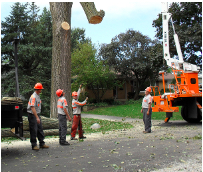Formazione Aziendale is a form of organized professional development offered by companies to their staff. It’s often the responsibility of an HR department or a dedicated L&D team to develop and deliver training programs that align with business needs.
Stuffy instruction manuals and boring training videos have given corporate training a bad reputation. But with the right approach, it can be an effective tool for growing employee skills and improving business performance.
An effective training program starts with a thorough and strategic analysis of employee training needs. Training needs assessments are designed to identify the gap between an individual’s current level of skill and knowledge and the required skills and capabilities needed for an organization to meet its goals. This process, often carried out by the learning and development department or human resources team, is necessary to design and implement successful training programs.
Training needs assessments can take a variety of forms, including surveys, interviews, focus groups, observation, performance evaluations, and existing documentation. Depending on the method used, the goal is to gather information about an organization’s needs, identify areas of improvement, and develop a list of possible training solutions that will bridge the gaps.
A crucial part of this process is ensuring that all stakeholders are involved. This includes the management team, employees, and other department heads. This inclusive approach ensures that all key players have a solid understanding of the results and helps them to see how their work and roles fit into the bigger picture. It also helps to ensure that the identified training needs are aligned with the overall company’s goals and objectives, which will increase the effectiveness of subsequent training interventions.
Taking an in-depth look at training needs also makes it easier for a training team to design and implement training programs that will improve performance and make a real difference in the workplace. When the training needs assessment is done well, it will clarify how much new knowledge is required and what kind of training will be most helpful for each individual or group.
This is especially important because sometimes it turns out that training isn’t the right solution. For instance, a training needs assessment may reveal that performance issues are due to more fundamental problems such as misalignment of expectations or lack of a supportive work environment. These problems are more likely to be solved by other management strategies than by training alone. For this reason, a training needs assessment should include a short list of potential options and their expected benefits, along with a general timeline for when each option will be implemented.
Training Design
Training design is the process of developing new training materials and lessons for employees. It is a vital part of the corporate training process, and helps to ensure that the company is getting value from its investments in employee development. It involves identifying skills gaps, creating training programs to address those gaps and deciding what methods will be used to deliver those programs.
There is a general consensus among training researchers that the quality of a training program is determined by several factors, including its instructional goals, the extent to which it promotes trainee self-efficacy and expectations that it will lead to the acquisition of valued learning outcomes and the degree to which training methods are effective in producing those desired outcomes. It is also important to take into account the individual characteristics of trainees.
Creating training material can be an overwhelming task, especially for a group that is charged with developing the training for a large number of employees at once. It is often a good idea to break the group into smaller groups, with each member responsible for one aspect of the training, such as explaining the policy on sexual harassment or how to use the new expense-tracking software. This will help to keep the training focused and allow for each member of the team to contribute their own unique perspective.
Another consideration when developing training is the audience that will be receiving it. Depending on the type of training, it is often necessary to tailor the content to the specific job titles in the company. For example, safety training must always be tailored to specific job duties in order to maximize the effectiveness of the training. For instance, safety procedures may need to be explained in a way that is most relevant to employees who work with chemicals.
Once the training has been designed, it must then be delivered to the employees. This can be done face-to-face, through video conference calls, over the phone or online. The training must be carefully adapted to the preferred method of delivery in order to maximize its effectiveness. For example, if an employee prefers to learn through discussion, training should be tailored to include this style of teaching.
Training Delivery
Corporate training is a means of providing learners with the knowledge and skills they need to perform their jobs at a high level. Typically, this is the responsibility of Learning and Development teams or, in smaller organizations, human resources departments. They identify learning gaps, create and deliver training programs, and devise long-term education strategies.
Aside from ensuring that employees have the skills to do their job, effective corporate training also helps cultivate a culture of continuous learning. This is because employee-driven professional development programs promote the idea that learning is a critical aspect of the work environment. Moreover, it also reinforces the notion that workers should seek out new skills to improve their performance and increase the value of their contributions.
Investing in corporate training is also a great way to boost employee retention. According to a recent survey, 59% of employees declare that career development opportunities are one of the top factors when choosing a new job. This shows that employees appreciate companies that are committed to their implicit development and growth.
When done right, corporate training is a powerful tool that can help companies develop and retain the best talent in the industry. However, it’s important to understand how to design and implement a successful program before you can reap the benefits.
The good news is that with the advancements in technology and increasing interest in measurable impact, it’s become easier than ever to design a quality corporate training program. In this blog post, we’ll take a closer look at the different types of corporate training, what makes them effective, and how to use them to your advantage.
Training Evaluation
A training evaluation process is a key element in corporate training. It helps to assess the effectiveness of a training program, measure its impact on business outcomes, and make improvements for future programs. The training evaluation process can involve gathering learner feedback through a variety of methods, such as surveys, observations, and performance appraisals. It can also include comparing job performance before and after training, and conducting a cost-benefit analysis of the program.
A company invests a lot of resources in its employees, so it makes sense to want to see a return on that investment. A successful training program can lead to increased productivity, employee satisfaction, and overall organizational success. It can also help a company develop and nurture its culture by ensuring that employees are motivated and knowledgeable about their roles.
Ultimately, corporate training programs are important in any business, because they provide the knowledge and skills that employees need to be effective at their jobs. Whether it is technical expertise or leadership development, corporate training is an essential part of any learning and development (L&D) strategy.
The first step in the training evaluation process is to identify the goals and objectives of the program. This will allow you to determine which tools and methodologies to use during the evaluation process. The Kirkpatrick Model, which is one of the most common evaluation methods used in corporate training, provides a four-level framework for measuring the effectiveness of a training program.
Once you know what you are looking for in your training evaluation, it is time to start collecting data. You can do this by using a variety of tools and methodologies, such as surveys, observations, and performance assessments. It is best to collect data from multiple sources so that you get a more holistic view of the effectiveness of your training program.


